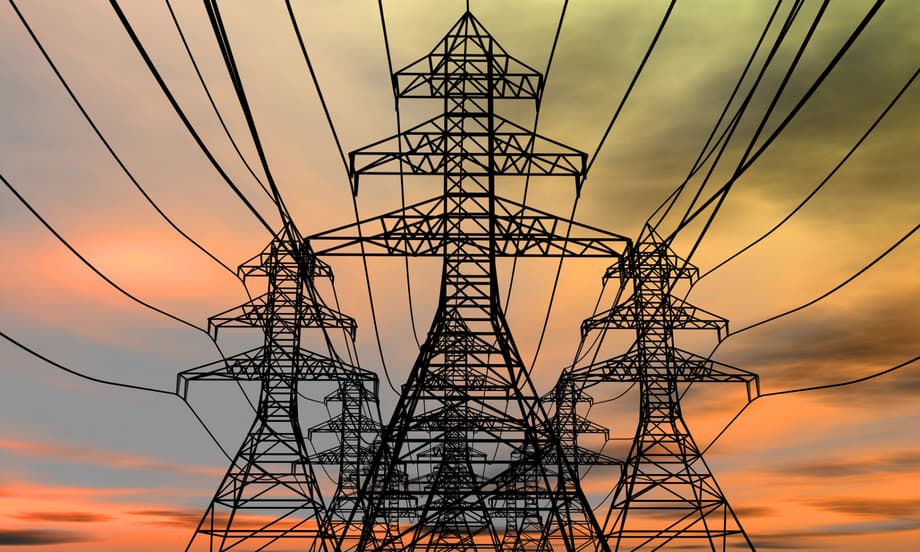Why this cross border power deal matters
Uzbekistan has signed a contract to keep exporting electricity to Afghanistan through 2026, sustaining a critical source of power for a country that depends on its neighbors to keep the lights on. The agreement followed talks in Tashkent between Uzbek Energy Minister Jurabek Mirzamakhmudov and Abdul Bari Omar, the chief executive of Da Afghanistan Breshna Sherkat (DABS), Afghanistan’s national utility. The contract was signed on the Uzbek side by Uzenergosotish, the centralized power trader. For Afghan households, hospitals, and businesses, continuity in cross border supply is vital while new infrastructure inside the country is built out.
Afghanistan imports most of its electricity, with roughly 800 megawatts flowing in from Uzbekistan, Tajikistan, Turkmenistan, and Iran. Domestic generation capacity is around 250 megawatts, which leaves a large gap covered by imports that cost an estimated 250 to 280 million US dollars each year. The new deal helps stabilize supply in 2026 while work continues on transmission lines and substations designed to increase transfer capacity from the Uzbek border toward Kabul and other high demand areas.
The two sides also agreed to accelerate construction on a package of projects launched in late summer that aim to expand Afghanistan’s grid. The program includes a 500 kilovolt corridor from the Surkhan hub in Uzbekistan to Dasht e Alwan and on to Puli Khumri, expansion of the Arghandeh substation near Kabul, a new Sheikh Mesri substation in Nangarhar, and an extension of the 220 kilovolt Kabul to Nangarhar line. These investments are valued at roughly 243 to 250 million US dollars. Work plans indicate staged completion, with key milestones into early 2027.
What the new contract covers
The parties formalized supply for calendar year 2026 while reviewing the status of new high voltage lines and substations on Afghan territory. Officials agreed to speed up construction and commissioning schedules so that additional capacity can flow sooner. The Uzbek side highlighted recent statements by President Shavkat Mirziyoyev at regional forums and at the United Nations that call for practical support to the Afghan people and against isolating the country. Energy cooperation has been a central part of that policy.
The commercial framework sits alongside a longer horizon arrangement. In 2019, Uzbekistan’s national grid, whose sales role is now performed by Uzenergosotish, entered a ten year take or pay contract with DABS that allows for deliveries up to 6 billion kilowatt hours per year. Specific volumes for 2026 were not disclosed, which is common in power trade where monthly schedules vary with seasons, demand, and maintenance windows. The new annual contract keeps deliveries active while the infrastructure program increases the ability to move power deeper into Afghan load centers.
The deal at a glance
- Parties: Uzenergosotish and DABS, under the oversight of the Uzbek Ministry of Energy
- Term: calendar year 2026, with volumes scheduled as system conditions permit
- Longer framework: a ten year take or pay agreement signed in 2019 allows up to 6 billion kilowatt hours per year
- Infrastructure link: 500 kV Surkhan to Dasht e Alwan to Puli Khumri line of about 200.6 km, plus new or expanded facilities near Kabul and in Nangarhar
- Capacity targets: projects are designed to enable imports between 800 and 1,000 megawatts into the Afghan grid as assets come online
- Delivery timeline: program milestones run through April 1, 2027, with earlier partial completions possible
Contract execution is paired with work on towers, conductors, transformers, and control systems. Project managers have been asked to compress timelines where feasible, without compromising reliability or safety standards. Each completed substation or line segment adds incremental flexibility to shift flows toward areas with the greatest need.
Afghanistan’s power crunch by the numbers
Electricity demand in Afghanistan exceeds domestic generation by a wide margin. DABS estimates roughly 800 megawatts are imported, against an internal capacity of about 250 megawatts that is constrained by aging plants and limited fuel. The result is a system in which urban load centers depend on steady inflows from the north and west. The annual import bill, estimated at 250 to 280 million US dollars, is a heavy burden for a fragile economy.
Afghanistan’s past arrears to regional suppliers underscored that risk. In February 2024, DABS said it had cleared 627 million US dollars in multi year debts across contracts with Iran, Tajikistan, Turkmenistan, and Uzbekistan. Clearing those balances reduced the risk of supply interruptions for nonpayment. Even with progress on liabilities, the system remains vulnerable to seasonal hydrology, cross border grid constraints, and technical failures that can trip lines or transformers.
The infrastructure package now underway is tailored to reduce those vulnerabilities. Reinforcing the backbone with higher voltage lines cuts losses over long distances and creates more options for dispatchers to reroute power when faults occur. The new Sheikh Mesri substation in Nangarhar, for example, should improve voltage control and reliability in the east, while the Arghandeh expansion is designed to handle more power for greater Kabul and to improve stability on the local network.
The network buildout inside Afghanistan
The 500 kV corridor that ties Surkhan to Dasht e Alwan and Puli Khumri is the anchor for larger volumes from Uzbekistan. Higher voltage increases transfer capacity and reduces thermal losses, which means more of each kilowatt hour delivered at the border actually reaches end users. The roughly 200.6 km segment is part of a longer route that aims to move imported power onward to Kabul and other demand hubs.
Expansion of the Arghandeh substation to 800 megavolt amperes, installation of a new 126 megavolt ampere Sheikh Mesri substation, and extension of the 220 kV Kabul to Nangarhar line are complementary steps. Substations convert very high voltage transmission to lower voltages suitable for distribution, and their reactive power equipment helps maintain stable voltage on the network. Together, these projects aim to lift the amount of power that can be safely moved into and around the country.
Completion is staged. Crews can energize some assets earlier for partial service while work continues elsewhere. The current schedule targets full delivery of the package by the first quarter of 2027. As each component is commissioned, planners will be able to schedule larger cross border transfers with fewer bottlenecks and improved reliability metrics.
CASA 1000 status and financing workarounds
CASA 1000 is a regional power project that will move surplus summer hydropower from Kyrgyzstan and Tajikistan to Afghanistan and Pakistan. The initiative, first agreed in 2016, carries a budget of about 1.2 billion US dollars. It includes new transmission infrastructure across four countries, with Afghanistan serving both as a transit route and as an off taker of power.
Work on the Afghan segment stopped in August 2021 amid the change in government. By that time, 18 percent of the towers in Afghanistan had been erected and roughly 95 percent of the necessary materials had been supplied. Financing institutions later decided to resume support for the project, citing near completion in Kyrgyzstan, Tajikistan, and Pakistan and the risk of stranded assets if the Afghan segment were left unfinished. To address concerns about fund flows, financing for the Afghan segment is structured so that payments and revenues are managed outside Afghanistan and do not pass through Taliban administration systems.
Officials in Kabul said in March 2025 that money had not yet reached the project, while claiming 70 percent completion in Afghanistan. In May, DABS chief executive Abdul Bari Omar said work had resumed and forecast completion within one to two years. The Afghan segment had previously been awarded to an Indian contractor, and the initial three year timeline proved unrealistic in light of security and financing delays.
Until CASA 1000 begins commercial flows, Afghanistan will lean on bilateral imports from neighbors, with Uzbekistan as a keystone supplier. Once CASA 1000 is operational, the country should have a more diverse supply mix across seasons, which reduces the risk of a single point of supply failure and gives grid operators more flexibility to balance the system.
What Uzbekistan gains and the regional balance
For Uzbekistan, exports to Afghanistan add revenue and strengthen regional ties. The policy message also aligns with repeated calls by President Shavkat Mirziyoyev to support the Afghan population and avoid isolation by advancing practical economic links. Energy trade is one of the few areas where immediate benefits reach people and businesses on both sides of the border.
Tashkent must balance exports with rising domestic demand and seasonal shortages that affect Central Asia in winter. Uzbekistan is also slated to supply 900 million kilowatt hours to Kazakhstan from March to December 2026, as part of a broader regional arrangement that coordinates water releases from Kyrgyzstan’s Toktogul Reservoir with power exchanges. These arrangements illustrate how energy, water, and agriculture planning across the region are intertwined. Managing that balance while meeting contractual export obligations is a constant planning challenge for system operators.
How cross border electricity trade functions
Power deals often combine capacity commitments with energy schedules. A megawatt measures instantaneous capacity, while a kilowatt hour measures energy delivered over time. High voltage lines, such as 500 kV corridors, move large blocks of power with lower losses. Substations are rated in megavolt amperes, which reflect both active and reactive power handling capability. Operators must hold reserves and maintain frequency and voltage within tight ranges, because even small deviations can trip protection systems and cause outages.
Contracts include provisions for outages, curtailments, and payment security. A take or pay clause means the buyer pays for a minimum volume whether or not it is taken, which gives the seller confidence to invest and schedule generation. In Afghanistan’s case, international partners have set up financing structures so that funds for projects like CASA 1000 are handled outside government systems, with escrow and independent oversight. These mechanics reduce legal and sanctions risk for suppliers and lenders and help keep power flowing despite a difficult political environment.
Key Points
- Uzbekistan and DABS signed a contract to continue power supplies to Afghanistan in 2026 after talks in Tashkent between Energy Minister Jurabek Mirzamakhmudov and DABS chief executive Abdul Bari Omar
- Uzenergosotish signed on the Uzbek side, extending a long running commercial relationship under a ten year take or pay framework agreed in 2019
- Afghanistan imports about 800 MW of power against roughly 250 MW of domestic capacity, paying an estimated 250 to 280 million US dollars per year
- A package of projects worth about 243 to 250 million US dollars is underway, including a 500 kV Surkhan to Dasht e Alwan to Puli Khumri line of about 200.6 km
- Substation projects include Arghandeh expansion to 800 MVA, a new 126 MVA Sheikh Mesri substation in Nangarhar, and an extension of the 220 kV Kabul to Nangarhar line
- Work schedules target completion by April 1, 2027, with incremental capacity as segments are commissioned
- CASA 1000 has resumed with financing structured so payments and revenues for the Afghan segment are handled outside Taliban administration systems
- Taliban officials have claimed 70 percent completion of CASA 1000 in Afghanistan, and DABS leadership has projected one to two years to finish
- DABS reported clearing 627 million US dollars in past power import debts in early 2024, reducing the risk of nonpayment interruptions
- Uzbekistan will also supply 900 million kilowatt hours to Kazakhstan in 2026, reflecting a broader regional exchange tied to water management












